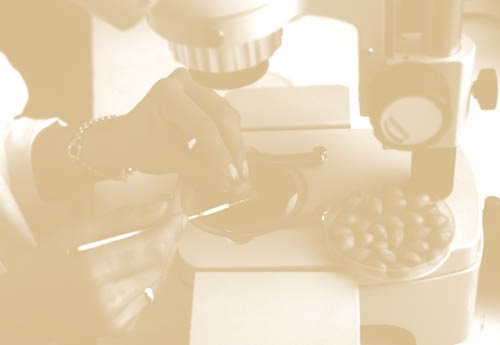Simply stated, the Codex Alimentarius is a collection of standards, codes of practice, guidelines and other recommendations. Some of these texts are very general, and some are very specific. Some deal with detailed requirements related to a food or group of foods; others deal with the operation and management of production processes or the operation of government regulatory systems for food safety and consumer protection.
Codex Alimentarius on the Internet:
www.codexalimentarius.net

FAO/19014/R. FAIDUTTI
STANDARDS, CODES OF PRACTICE, GUIDELINES AND OTHER RECOMMENDATIONS
Codex standards usually relate to product characteristics and may deal with all government-regulated characteristics appropriate to the commodity, or only one characteristic. Maximum residue limits (MRLs) for residues of pesticides or veterinary drugs in foods are examples of standards dealing with only one characteristic. There are Codex general standards for food additives and contaminants and toxins in foods that contain both general and commodity-specific provisions. The Codex General Standard for the Labelling of Prepackaged Foods covers all foods in this category. Because standards relate to product characteristics, they can be applied wherever the products are traded.
Codex methods of analysis and sampling, including those for contaminants and residues of pesticides and veterinary drugs in foods, are also considered Codex standards.
Codex codes of practice - including codes of hygienic practice - define the production, processing, manufacturing, transport and storage practices for individual foods or groups of foods that are considered essential to ensure the safety and suitability of food for consumption. For food hygiene, the basic text is the Codex General Principles of Food Hygiene, which introduces the use of the Hazard Analysis and Critical Control Point (HACCP) food safety management system. A code of practice on the control of the use of veterinary drugs provides general guidance in this area.
Codex guidelines fall into two categories:
principles that set out policy in certain key areas; and
guidelines for the interpretation of these principles or for the interpretation of the provisions of the Codex general standards.
In the cases of food additives, contaminants, food hygiene and meat hygiene, the basic principles governing the regulation of these matters are built into the relevant standards and codes of practice.
There are free-standing Codex principles covering:
addition of essential nutrients to foods;
food import and export inspection and certification;
establishment and application of microbiological criteria for foods;
conduct of microbiological risk assessment;
risk analysis of foods derived from modern biotechnology.
Interpretative Codex guidelines include those for food labelling, especially the regulation of claims made on the label. This group includes guidelines for nutrition and health claims; conditions for production, marketing and labelling of organic foods; and foods claimed to be “halal”. There are several guidelines that interpret the provisions of the Codex Principles for Food Import and Export Inspection and Certification, and guidelines on the conduct of safety assessments of foods from DNA-modified plants and micro-organisms.
|
The Codex scorecard*
|
COMMODITY STANDARDS
By far the largest number of specific standards in the Codex Alimentarius is the group called “commodity standards”. The major commodities included in the Codex are:
cereals, pulses (legumes) and derived products including vegetable proteins
fats and oils and related products
fish and fishery products
fresh fruits and vegetables
processed and quick-frozen fruits and vegetables
fruit juices
meat and meat products; soups and broths
milk and milk products
sugars, cocoa products and chocolate and other miscellaneous products
Commodity standards tend to follow a fixed format set out in the Procedural Manual of the Codex Alimentarius Commission. The format consists of the following categories of information:
Scope includes the name of the food to which the standard applies and, in most cases, the purpose for which the commodity will be used.
Description includes a definition of the product or products covered with an indication, where appropriate, of the raw materials from which they are derived.
Essential composition includes information on the composition and identity characteristics of the commodity, as well as any compulsory and optional ingredients.
Food additives contains the names of the additives and the maximum amount permitted to be added to the food. Food additives must be cleared by FAO and WHO for their safety, and the use of food additives must be consistent with the Codex General Standard for Food Additives.
Contaminants contains limits for contaminants that may occur in the product(s) covered by the standard. These limits are based on the scientific advice of FAO and WHO and must be consistent with the Codex General Standard for Contaminants and Toxins in Foods. Where appropriate, reference is also made to the Codex Maximum Limits for pesticide residues and for residues of veterinary drugs in foods.
Hygiene makes reference to relevant Codex Codes of Hygienic Practice for the commodity concerned. In almost all cases it is required that the product shall be free from pathogenic micro-organisms or any toxins or other poisonous or deleterious substances in amounts that represent a hazard to health.
Weights and measures contains provisions such as Fill of the container and the drained weight of the commodity.
Labelling includes provisions on the name of the food and any special requirements to ensure that the consumer is not deceived or misled about the nature of the food. These provisions must be consistent with the Codex General Standard for the Labelling of Prepackaged Foods. Requirements for the listing of ingredients and date-marking are specified.
Methods of analysis and sampling contains a list of the test methods needed to ensure that the commodity conforms to the requirements of the standard. References are made to internationally recognized test methods that meet the Commission’s criteria for accuracy, precision, etc.